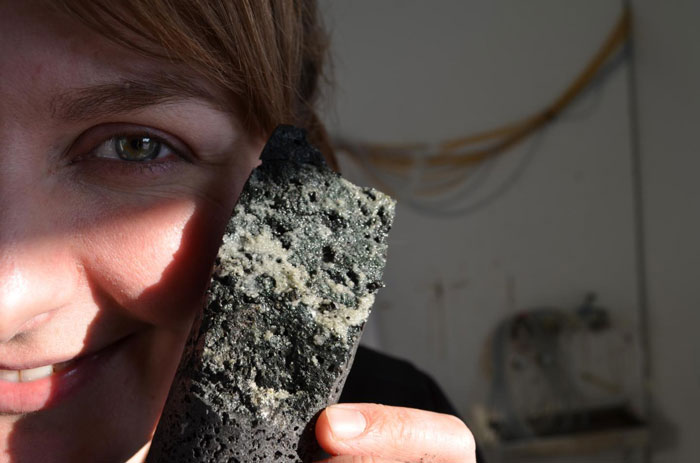

Por: Guillermo T. 07 de Julho de 2016
Scientists have figured out how to turn CO2 into solid rock
InglêsEncontre um professor e combine aulas particulares Presenciais ou Online
When it comes to dealing with human-caused carbon dioxide (CO2) emissions, one of the more ambitious but still largely unproven fixes could be carbon capture, which sucks CO2 out of the atmosphere or from industrial plants.
Two of the biggest problems with carbon capture have been its cost, and finding ways to efficiently store or repurpose the CO2 once it's been extracted. But now a new technique could drastically overhaul this method of mitigating climate change: turning carbon emissions into solid rock.
An international team of scientists working in Iceland has successfully demonstrated that CO2 emissions can be pumped underground and altered chemically to form solid stone. While storing carbon in the earth is not a new thing, nobody ever expected the process to work this quickly or efficiently.
In a new study published in Science, the researchers explain that their technique for turning atmospheric carbon into solid rock only takes a few months – a timeframe that could finally help make carbon capture and storage a practical, workable solution.
"This means that we can pump down large amounts of CO2 and store it in a very safe way over a very short period of time," said hydrologist Martin Stute from Columbia University.
 Kevin Krajick/Lamont-Doherty Earth Observatory
Kevin Krajick/Lamont-Doherty Earth Observatory
The researchers began their CarbFix project at the Hellisheidi power plant – the world's largest geothermal facility. They mixed carbon dioxide and hydrogen sulphide produced by the plant with water, and injected it into the volcanic basalt underneath the plant.
When basalt is exposed to CO2 and water, the carbon precipitates into a white, chalky solid, but in these kinds of conditions, nobody knew how long the process might take.
Initial estimates suggested that the process could take between eight to 12 years, but in this case, the conversion began to take place in a matter of months.
"Our results show that between 95 and 98 percent of the injected CO2 was mineralised over the period of less than two years, which is amazingly fast," said geoengineer and lead researcher Juerg Matter from the University of Southampton in the UK.








